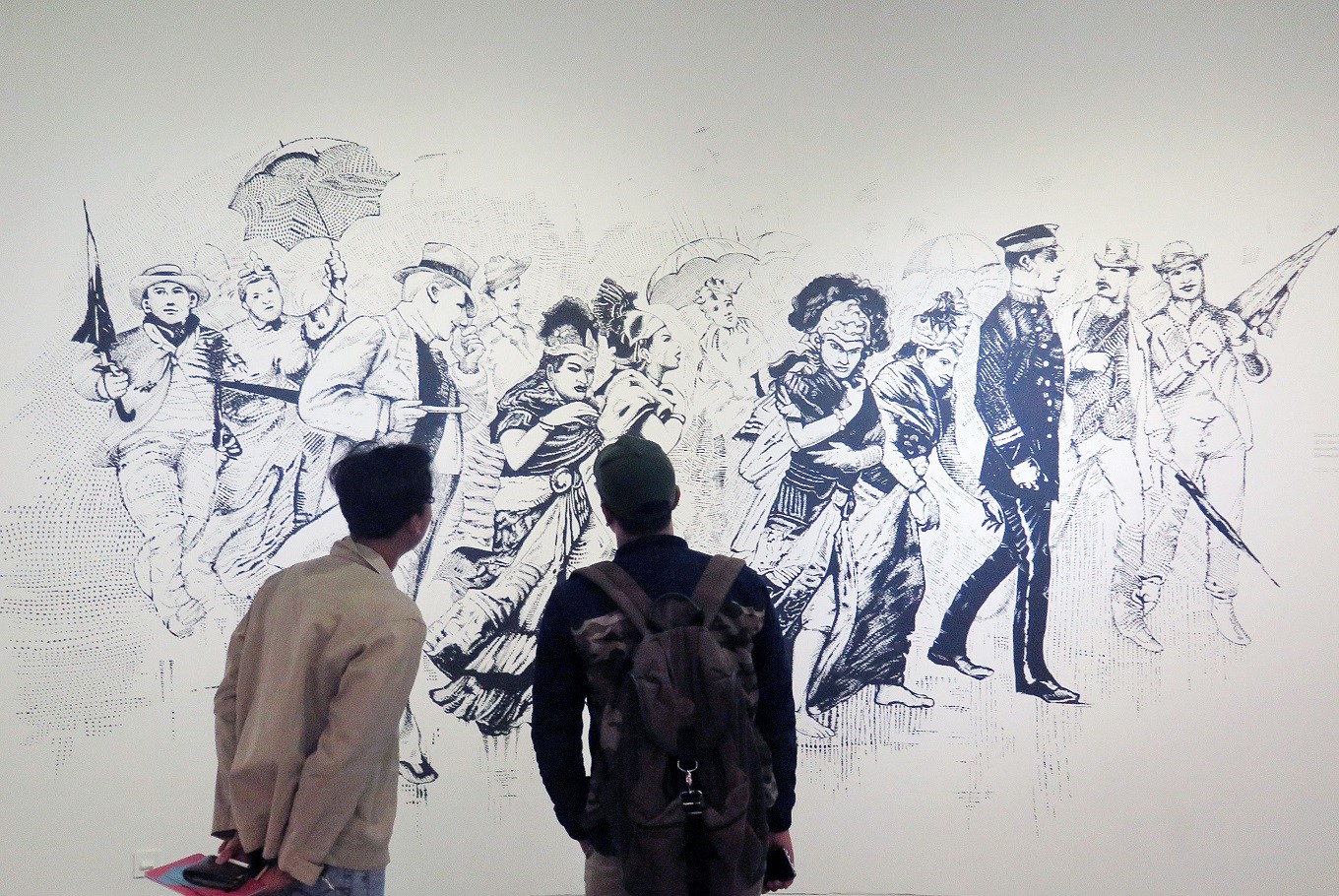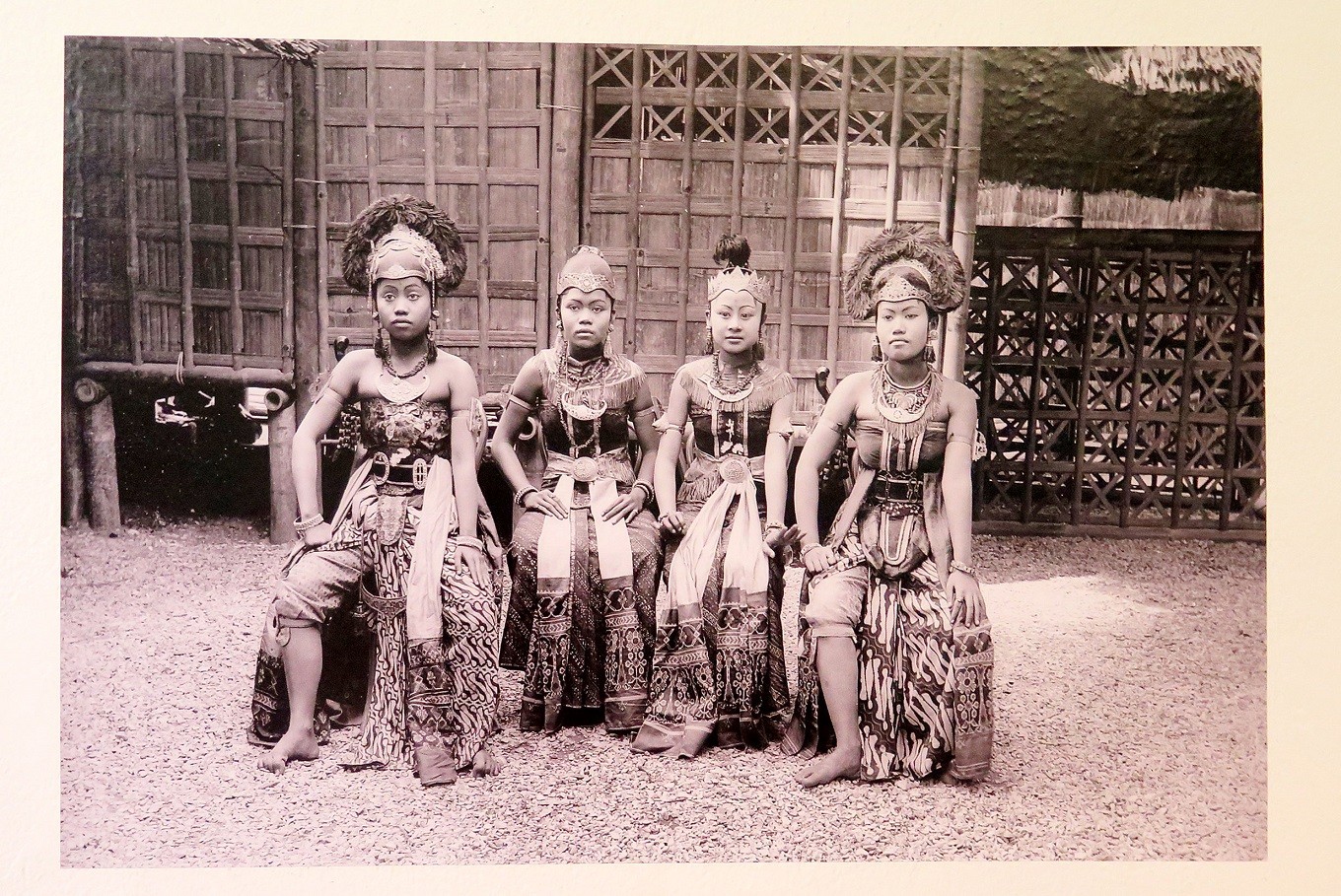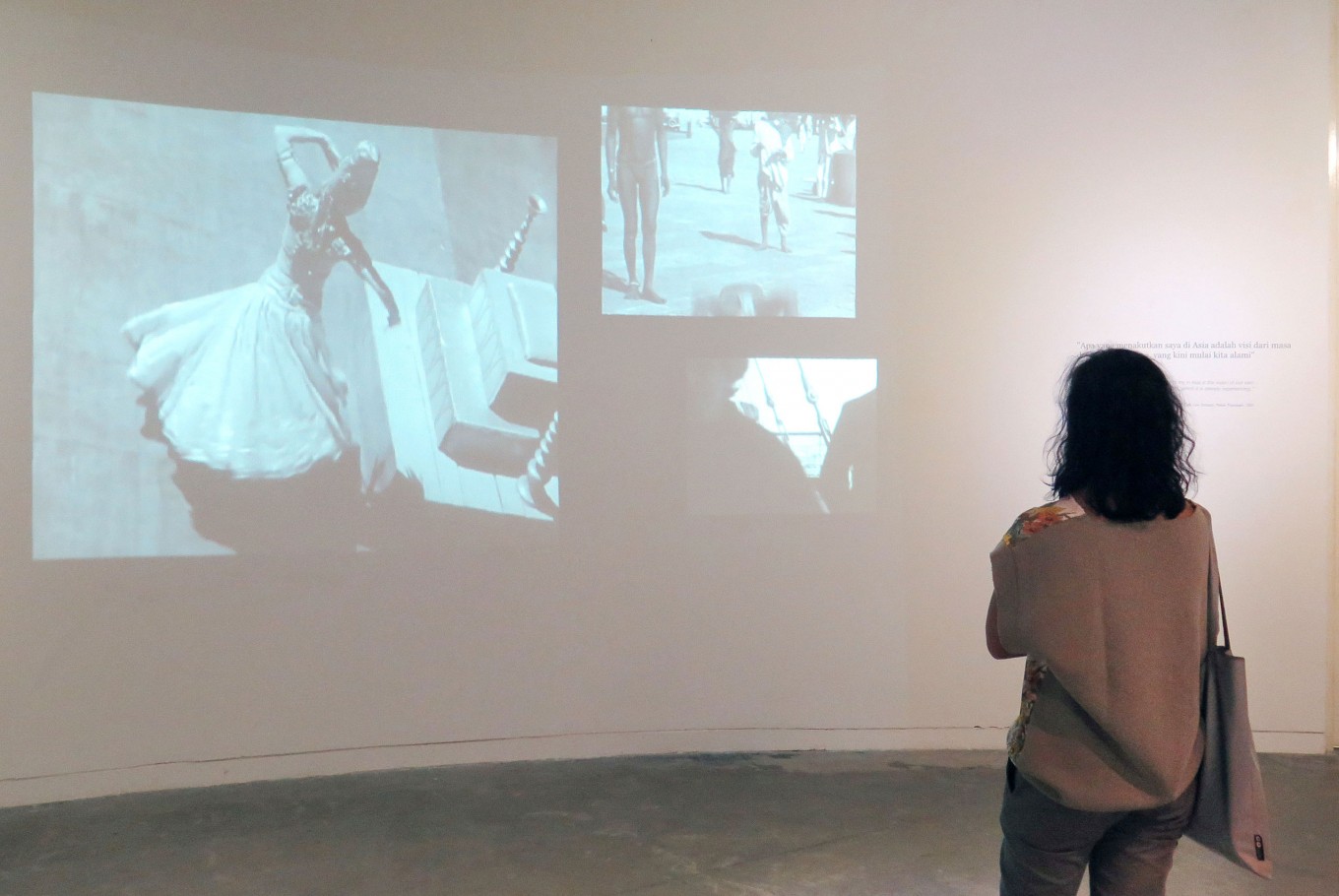Popular Reads
Top Results
Can't find what you're looking for?
View all search resultsPopular Reads
Top Results
Can't find what you're looking for?
View all search results'Menatap Sang Liyan': Orientalism in the history of dance
Long before the country was born, Indonesian dancers had stolen the world’s attention.
Change text size
Gift Premium Articles
to Anyone
R
enowned choreographer Eko Supriyanto made Indonesia proud when he danced for pop queen Madonna, but Indonesian dancers had already grabbed the world’s attention a long while before that.
Curator Helly Minarti revealed that many thought legendary artist Bagong Kussudiardjo was the first Indonesian to dance overseas in his performance in the United States back in 1955.
However in 1889, four Javanese women from Central Java’s village of Wonogiri danced in the Dutch East Indies pavilion during the Paris Colonial Exhibition in Paris. At that time, the Western audience mistakenly took them as princesses of the Mangkunegaran kingdom.
“They were actually ordinary people brought over by the colonial ruler for the exhibition,” Helly said on Saturday during the opening of her exhibition, titled Menatap Sang Liyan (Looking at the Other) at Salihara, a cultural center in South Jakarta.
For the European colonizers, the Paris Colonial Exhibition was a platform to showcase developments in their colonies, which was the reason for Indonesia’s ruler at the time, the Dutch, to bring the four Javanese women to represent the Dutch East Indies.
 Piece of history: Visitors look at a mural depicting an illustration believed to have been drawn by Emilie Bayard for an article by Frantz Jourdain in Edmond de Goncourt's Journal No. 27 on Aug. 17, 1889. The illustration was about four Javanese dancers who performed in Paris. (JP/Kurniawan Ulung)
Piece of history: Visitors look at a mural depicting an illustration believed to have been drawn by Emilie Bayard for an article by Frantz Jourdain in Edmond de Goncourt's Journal No. 27 on Aug. 17, 1889. The illustration was about four Javanese dancers who performed in Paris. (JP/Kurniawan Ulung)
Read also: Eko Supriyanto's 'Cry Jailolo' dazzles in Paris festival
For Helly, the ongoing exhibition, which runs until Feb. 28, is expected to encourage more discussions about the history of Indonesian dance performances both at home and abroad.
In the exhibition, the photograph of the four Javanese dancers, who she said were allegedly the first Indonesian dancers to perform overseas, is on display.
She said there is a possibility she is wrong because a gamelan set was found in Europe before 1889.
In Paris, the four women — Sarkiem, Tamina, Sukia and Wakiem — stayed for six months during which they performed all over, becoming the talk of the town, dancing barefoot with their bronze skin exposed.
They also inspired a writer to write their story in a novel. There was also an illustration of them that appeared in Edmond de Goncourt Journal No. 27 on Aug. 17, 1889.
The exhibition’s title, “Menatap Sang Liyan”, was selected to represent how Western people looked at the four Javanese dancers, whom they called “the other” (liyan). They were seen differently because they showed a lot of skin through the dance costumes they wore, something that was considered unusual at the time.
“For me, as a Jakarta citizen, Balinese people are ‘sang liyan’ because we have a different culture,” Helly said.
 Cultural ambassadors: Four Javanese dancers who performed in Paris in 1889 are pictured together.(Neurdein/Roger Viollet)
Cultural ambassadors: Four Javanese dancers who performed in Paris in 1889 are pictured together.(Neurdein/Roger Viollet)
Read also: Rekindling Malang's Ang Hien Hoo 'wayang orang'
The exhibition also displays the complexity of orientalism in the art of dance by showing various archives from many instituPh.D. tions, ranging from the National Library of Indonesia, French National Library, The Eye Museum in Amsterdam to the New York Performing Arts Library.
“Orientalism is the way the West looked at the East in the context of Western colonialism,” she said, adding that “orientalism” was the title of a book by Palestinian thinker Edward W. Said, who said Western people often patronized Eastern culture.
At the Paris Colonial Exhibition in 1931, a Balinese dance troupe from Pliatan village of Ubud performed, which inspired French poet Antonin Artaud to write Theater and
Its Double. By 1938, Kecak dance was performed for tourists, and it became Bali’s most iconic tourist attraction.
The exhibition also introduces the Oriental Tour of Denishwan, the company of Americans Ruth St. Denis and Ted Shawn, both deemed as pioneers of American modern dance.
Three monitors were also installed at the exhibition’s hall, screening movies about the history of dances like Kecak Ramayana, performed at the Uluwatu temple; and Sanghyang Dedari, a Balinese ritual dance only performed within the inner side of Balinese Hindu temples to ward off the evil spirit.
 Dance moves: A movie on ballet dancers of the early 20th century is screened at the exhibition, which is being held at the Salihara cultural center in South Jakarta until Feb. 28.(JP/Kurniawan Ulung)
Dance moves: A movie on ballet dancers of the early 20th century is screened at the exhibition, which is being held at the Salihara cultural center in South Jakarta until Feb. 28.(JP/Kurniawan Ulung)
Read also: Kebo Ketan: Happening art with an impact
The exhibition also screens three old movies about two male ballet dancers of the early 20th century — Vaslav Nijinsky of group Ballet Russes, who danced as Khrisna in Le Dieu Bleu; and Jean Borlin of ensemble Ballet Suédois, who danced as Siamese Prince in Danse Céleste.
Helly, who is the head of the program division at the Jakarta Arts Council (DKJ), said the exhibition was a small part of her thesis, entitled Modern and Contemporary Dance in Asia: Bodies, Routes and Discourse, which she completed in Roehampton University in London in 2014.
She had previously curated the 2nd Asia-Europe Dance Forum in 2004, Indonesian Dance Festival in 2014 and Art Summit Indonesia: Reposisi in 2016.
She hopes the ongoing exhibition, which took her one year to research and prepare, would motivate Indonesian dancers and choreographers to be more passionate about learning the history of Indonesian dances instead of merely creating new dance moves.
“I want them to be ‘hungrier’ to learn about our culture through dance,” she said.











